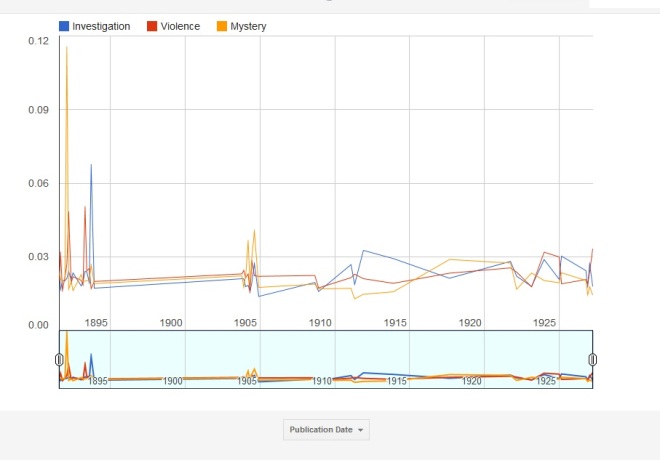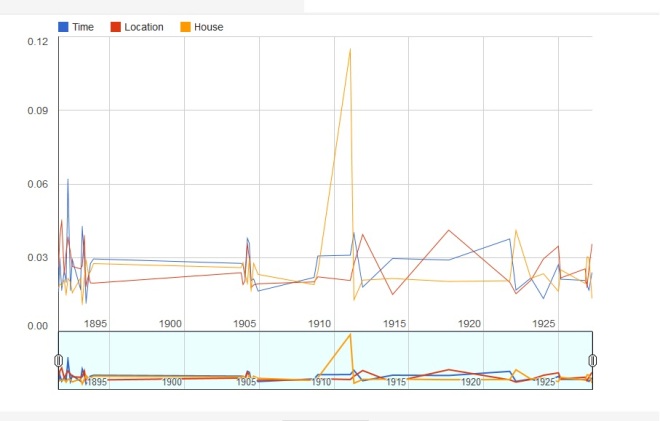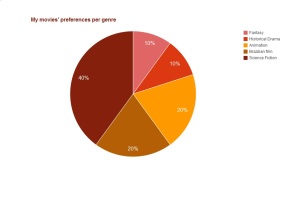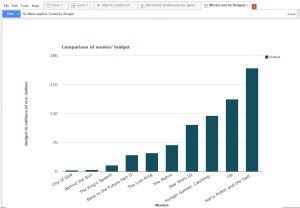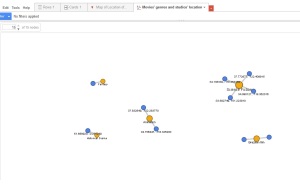I first decided to compare the topics of “crime scene”, “writing”, and “crime solving”. In the beginning of the chart, writing spikes significantly in 1893. I wasn’t able to find any major reasons why this happened history wise, but when looking at the date of the publication, I found out that this came from The Adventure of the Reigate Squire. In this story, the main clue that Holmes and Watson find is a torn piece of paper found in the victim’s hand, which (SPOILER ALERT) turned out to be written by the murderers. Crime scene seems to fluctuate until it spikes in 1908. From then to around 1925, it seems to stay pretty constant. I noticed that crime solving seemed to be pretty steady with crime scene, and would increase/decrease at around the same times, which I thought was interesting. 
The second set I decided to compare was “light” and “smoking”. I put these two topics together because I thought the words in the light category were words that would be used when lighting a cigar/cigarette. The main thing that I noticed in this chart is whenever one rises/decreases, the other does as well, which makes me think that my first assumption was correct. And when you look from around 1920 on, you can see that although they are at different levels, they increase and decrease in the same pattern.
The third set I compared was “time” and “physical description”. I thought that the two would have some things in common based off of physical descriptions over time. But after doing some research, I unfortunately wasn’t able to find much of anything that would tie these two categories together.
The last categories that I analyzed were “marriage”, “business”, and “travel”. A cool thing I found was when I noticed that business made a huge peak in 1904, and after doing a little research I found out that this was when the telegraph started becoming more popular in common society. I also found that the 1904 World’s Fair occurred during this time, which was a big time for business and introducing new products to the world. Travel peaked in 1908, and I found out that this was when Ford first began making the Model T, which was a widely popular car during this time.
Overall, I thought this assignment was interesting, but when it came to figuring out how these categories compared to things in history I didn’t find it very helpful. I thought the spikes in the charts would lead my research to significant things throughout history but most of the time I couldn’t find anything, which was a little disappointing.



